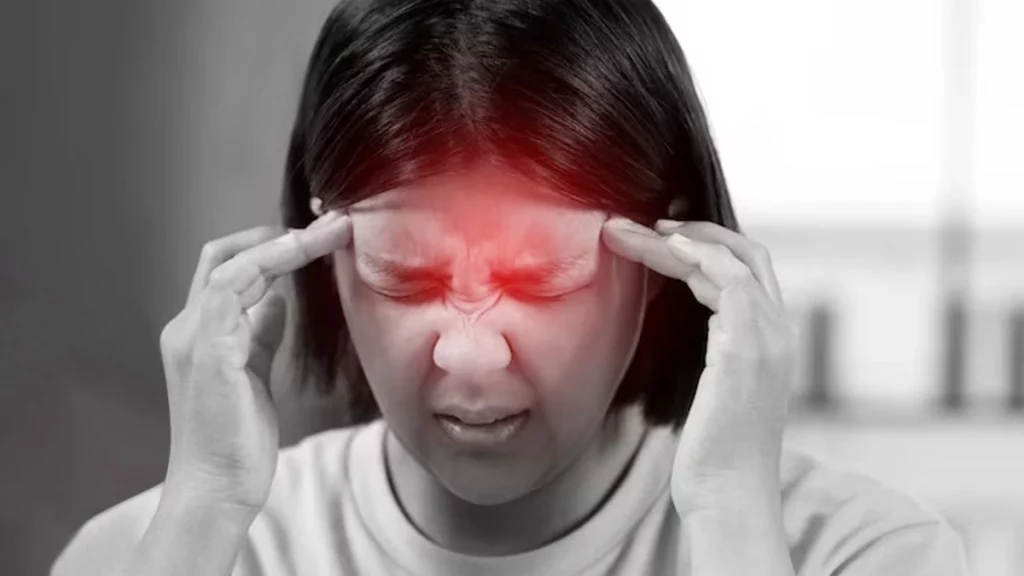Headaches are a common ailment that can manifest in various forms and locations, often causing discomfort and disruption to daily life. One specific type of headache that individuals may experience is pain behind the right, left, or both eyes. Understanding the potential causes and appropriate treatments for headaches in these specific regions is essential for effective management and relief.
Table of Contents
Causes of Headache Behind Right, Left, or Both Eyes:
- Tension Headaches:
- Location: Tension headaches can cause pain on either side of the head, including behind the eyes.
- Cause: Stress, poor posture, and muscle tension are common triggers for tension headaches.
- Treatment: Relaxation techniques, stress management, and over-the-counter pain relievers can be helpful.
- Migraines:
- Location: Migraines often cause throbbing pain on one side of the head, and this can extend to behind the eyes.
- Cause: Genetic factors, hormonal changes, and certain triggers such as specific foods or environmental factors.
- Treatment: Medications prescribed by a healthcare professional, lifestyle modifications, and identifying and avoiding triggers.
- Sinusitis:
- Location: Inflammation of the sinuses can lead to pain behind the eyes.
- Cause: Infections, allergies, or irritants causing sinus inflammation.
- Treatment: Nasal decongestants, saline nasal irrigation, and antibiotics in case of bacterial infections.
- Eye Strain:
- Location: Prolonged use of digital devices or reading in poor lighting can cause discomfort behind the eyes.
- Cause: Prolonged focus on screens, reading, or other close-up activities.
- Treatment: Take regular breaks, ensure proper lighting, and consider prescription glasses if necessary.
- Cluster Headaches:
- Location: Cluster headaches often cause severe, sharp pain around one eye.
- Cause: The exact cause is unknown, but certain factors like alcohol consumption and smoking may trigger cluster headaches.
- Treatment: Oxygen therapy, prescription medications, and lifestyle changes.
Treatment Options:
- Over-the-Counter Pain Relievers:
- Medications like ibuprofen or acetaminophen can help alleviate mild to moderate headaches. However, prolonged or frequent use should be monitored.
- Prescription Medications:
- For more severe headaches, prescription medications like triptans (for migraines) or specific pain relievers may be recommended by a healthcare professional.
- Lifestyle Modifications:
- Adopting a healthy lifestyle, managing stress, and getting regular exercise can contribute to headache prevention.
- Alternative Therapies:
- Practices such as acupuncture, massage, and biofeedback have shown effectiveness in some individuals for headache relief.
Or If its getting worst you can try the below options:
Lifestyle Adjustments:
- Hydration:
- Dehydration can contribute to headaches. Ensure adequate water intake throughout the day to support overall health and potentially reduce the frequency and intensity of headaches.
- Regular Exercise:
- Engaging in regular physical activity helps reduce stress and promotes overall well-being. Exercise can also alleviate tension and improve blood circulation, contributing to headache prevention.
- Healthy Sleep Habits:
- Poor sleep patterns or lack of sleep can trigger headaches. Establish a consistent sleep routine, maintain a comfortable sleep environment, and aim for 7-9 hours of quality sleep each night.
Dietary Considerations:
- Balanced Diet:
- Nutrient-rich foods can positively impact overall health and may contribute to headache prevention. Avoid skipping meals, as irregular eating patterns can trigger headaches in some individuals.
- Identify Trigger Foods:
- For those prone to migraines, certain foods like chocolate, aged cheese, and processed meats can act as triggers. Keeping a food diary can help identify and avoid potential culprits.
Stress Management Techniques:
- Mindfulness and Relaxation:
- Practices such as deep breathing, meditation, and yoga can help reduce stress levels, lowering the likelihood of tension headaches.
- Biofeedback:
- Biofeedback is a technique that teaches individuals to control physiological processes, such as muscle tension, to reduce headache frequency and intensity.
Professional Interventions:
- Physical Therapy:
- For individuals with tension headaches related to muscle tension or poor posture, physical therapy can provide exercises and techniques to improve posture and reduce muscle strain.
- Vision Correction:
- If eye strain is a recurring issue, an eye examination may reveal the need for corrective lenses. Prescription glasses or contact lenses can significantly reduce eye strain and associated headaches.
- Allergy Management:
- If sinusitis is recurrent due to allergies, allergy management strategies, such as avoiding triggers and taking antihistamines, can be beneficial.
Seeking Medical Attention:
- Neurological Evaluation:
- Individuals experiencing severe or persistent headaches should consult a neurologist for a comprehensive neurological evaluation to rule out underlying conditions.
- Medication Management:
- In some cases, preventative medications may be prescribed to reduce the frequency and severity of headaches, especially for chronic migraine sufferers.
- Counseling or Cognitive Behavioral Therapy:
- For those whose headaches are closely tied to stress or emotional factors, counseling or cognitive-behavioral therapy (CBT) can provide effective coping mechanisms.
When to Seek Medical Attention:
Persistent or severe headaches, especially those accompanied by other symptoms like nausea, vomiting, vision changes, or neurological symptoms, should prompt a visit to a healthcare professional for a thorough evaluation.
Conclusion:
Headaches behind the right, left, or both eyes can be caused by a variety of factors, ranging from tension and migraines to sinusitis and eye strain. Identifying the specific cause is crucial for effective treatment and long-term management. Individuals experiencing persistent or severe headaches should consult a healthcare professional for a comprehensive assessment and tailored treatment plan.
